The Corporate Spin begins.. General Electric Defends Nuclear Reactor Design Amid Japan Crisis
*Surprisingly*, from Fox 5, originally from the Wall Street Journal. Excerpts:
General Electric defended the design of a now-stricken reactor it supplied to Japan 40 years ago, saying its containment system was safe and reliable, The Wall Street Journal reported Tuesday.
Fukushima No. 1 plant's reactor No. 1, which experienced a dramatic explosion Saturday, is equipped with a GE boiling water reactor with a so-called Mark 1 containment system. There have been concerns about that particular design for years, with critics saying it is not as robust as later models.
And:
GE dismissed that criticism, in what appeared to be its first comments about equipment it supplied Japan's Tokyo Electric Power Co. (TEPCO).
"The BWR Mark 1 reactor is the industry's workhorse with a proven track record of safety and reliability for more than 40 years," Michael Tetuan, spokesman for GE Hitachi Nuclear Energy, said Monday. "There has never been a breach of a Mark 1 containment system."
Until Now. And there are how many now? Also not the wording "design for years." Also note the 1971 was 40 years ago. Continue on..
Reactors At Heart Of Japanese Nuclear Crisis Raised Concerns As Early As 1972, Memos Show
In the early 1970s, just as a number of reactors were about to be licensed, Stephen Hanauer, a senior member of the Atomic Energy Commission staff, suggested banning "pressure suppression" methods to contain radiation in the event of a meltdown -- methods built into General Electric's Mark I and Mark II containment designs as well as Westinghouse's ice condenser design. The advice was considered and disregarded.
"Steve's idea to ban pressure suppression containment schemes is an attractive one in some ways," Joseph Hendrie, then a deputy director with the AEC, wrote in a Sept. 25, 1972, memo. Hendrie acknowledged that alternative, "dry" containments -- featuring the towers or domes commonly associated with nuclear plants -- had the "notable advantage of brute simplicity in dealing with a primary blowdown, and are thereby free of the perils of bypass leakage."
But regulators ultimately decided that the technology developed by General Electric and Westinghouse was "firmly embedded in the conventional wisdom." Banning it, Hendrie wrote, "would generally create more turmoil than I can stand." His memo was obtained by the Union of Concerned Scientists through a Freedom of Information Act request.
..
Today, three of six GE reactors at the Fukushima Daiichi plant in northeastern Japan are in danger of meltdown after a catastrophic earthquake and tsunami. And 31 aging GE reactors of the same design -- 23 of them with Mark I containment systems and eight of them with Mark II--continue to operate in the U.S., raising concerns among both politicians and scientists. The Mark I containment is rectangular, the Mark II cylindrical. This NRC document explains the two in more detail.
..
NRC Chairman Gregory B. Jaczko told reporters Monday that all U.S. nuclear plants "are designed to withstand significant natural phenomena like earthquakes, tornadoes and tsunamis. We believe we have a very solid and strong regulatory structure in place right now."
..
But industry watchdogs see the fateful decision regulators made almost 40 years ago -- to choose political and economic pragmatism over tougher safety standards -- as endemic in the culture of the NRC as it deals with the prevention of low-probability, high-consequence accidents.
..
They were designed to withstand a pipe break, not a meltdown," he said. It wouldn't take a major earthquake or a tsunami to knock out primary and backup power and push the systems to the breaking point; a hurricane or tornado could suffice.
..
A 1975 report for GE by a team of scientists and engineers found that the company's boiling water reactors were more vulnerable to seismic events than pressurized water reactors -- such as Three Mile Island -- designed by Westinghouse and other firms.
"The PWR [pressurized water reactor] design is inherently more seismic resistant because of lower reactor vessel placement and the need to design for larger LOCA loadings," the report said. LOCA is an acronym that stands for loss of coolant accident -- the type of accident triggered by the earthquake and tsunami in Japan. GE's research team said it would push to make the company's newer reactors more able to withstand earthquake-related stresses.
..
In 1986, former NRC official Harold Denton told a group of utility executives that, according to commission studies, GE Mark I reactors had "something like a 90 percent probability of that containment failing" under accident conditions.
Read the whole article.
Japan suspends work at stricken nuclear plant
Japan ordered emergency workers to withdraw from its stricken nuclear plant Wednesday amid a surge in radiation, temporarily suspending efforts to cool the overheating reactors.
Chief Cabinet Secretary Yukio Edano said the workers, who have been dousing the reactors with seawater in a frantic effort to stabilize their temperatures, had no choice but to pull back from the most dangerous areas.
"The workers cannot carry out even minimal work at the plant now," Edano said, as smoke billowed above the crippled Fukushima Dai-ichi nuclear complex. "Because of the radiation risk we are on standby."
This is happening, and it's rapidly spinning out of control..
Health risks of radiation depend on dose, duration Frequently Asked Questions.
People are stocking up for the long term..
Magnitude 6.0 - NEAR THE EAST COAST OF HONSHU, JAPAN
69 km (42 miles) SSE of Mito, Honshu, Japan
95 km (59 miles) E of TOKYO, Japan
112 km (69 miles) ENE of Yokohama, Honshu, Japan
117 km (72 miles) SE of Utsunomiya, Honshu, Japan
NHK World TV streaming here.
What will spark the next Fukushima?
The gung-ho nuclear industry is in deep shock. Just as it and its cheerleader, the International Atomic Energy Agency, were preparing to mark next month's 25th anniversary of the Chernobyl accident with a series of self-congratulatory statements about the dawning of a safe age of clean atomic power, a series of catastrophic but entirely avoidable accidents take place in not one but three reactors in one of the richest countries of the world. Fukushima is not a rotting old power plant in a failed state manned by half-trained kids, but supposedly one of the safest stations in one of the most safety-conscious countries with the best engineers and technologists in the world.
Chernobyl blew up not because the reactor malfunctioned but because an ill-judged experiment to see how long safety equipment would function during shutdown went too far. So, too, in Japan, it was not the nuclear bits of the station that went wrong but the conventional technology. The pumps did not work because the power supply went down and the back-up support was not there because no one had thought what happened was possible.
Even though Japan had been warned many times that possibly the most dangerous place in the world to site a nuclear power station was on its coast, no one had taken into account the double-whammy effect of a tsunami and an earthquake on conventional technology. It's easy to be wise after the event, but the inquest will surely show that the accident was not caused by an unpredictable natural disaster, but by a series of highly predictable bad calls by human regulators.
*Surprisingly*, from Fox 5, originally from the Wall Street Journal. Excerpts:
General Electric defended the design of a now-stricken reactor it supplied to Japan 40 years ago, saying its containment system was safe and reliable, The Wall Street Journal reported Tuesday.
Fukushima No. 1 plant's reactor No. 1, which experienced a dramatic explosion Saturday, is equipped with a GE boiling water reactor with a so-called Mark 1 containment system. There have been concerns about that particular design for years, with critics saying it is not as robust as later models.
And:
GE dismissed that criticism, in what appeared to be its first comments about equipment it supplied Japan's Tokyo Electric Power Co. (TEPCO).
"The BWR Mark 1 reactor is the industry's workhorse with a proven track record of safety and reliability for more than 40 years," Michael Tetuan, spokesman for GE Hitachi Nuclear Energy, said Monday. "There has never been a breach of a Mark 1 containment system."
Until Now. And there are how many now? Also not the wording "design for years." Also note the 1971 was 40 years ago. Continue on..
Reactors At Heart Of Japanese Nuclear Crisis Raised Concerns As Early As 1972, Memos Show
In the early 1970s, just as a number of reactors were about to be licensed, Stephen Hanauer, a senior member of the Atomic Energy Commission staff, suggested banning "pressure suppression" methods to contain radiation in the event of a meltdown -- methods built into General Electric's Mark I and Mark II containment designs as well as Westinghouse's ice condenser design. The advice was considered and disregarded.
"Steve's idea to ban pressure suppression containment schemes is an attractive one in some ways," Joseph Hendrie, then a deputy director with the AEC, wrote in a Sept. 25, 1972, memo. Hendrie acknowledged that alternative, "dry" containments -- featuring the towers or domes commonly associated with nuclear plants -- had the "notable advantage of brute simplicity in dealing with a primary blowdown, and are thereby free of the perils of bypass leakage."
But regulators ultimately decided that the technology developed by General Electric and Westinghouse was "firmly embedded in the conventional wisdom." Banning it, Hendrie wrote, "would generally create more turmoil than I can stand." His memo was obtained by the Union of Concerned Scientists through a Freedom of Information Act request.
..
Today, three of six GE reactors at the Fukushima Daiichi plant in northeastern Japan are in danger of meltdown after a catastrophic earthquake and tsunami. And 31 aging GE reactors of the same design -- 23 of them with Mark I containment systems and eight of them with Mark II--continue to operate in the U.S., raising concerns among both politicians and scientists. The Mark I containment is rectangular, the Mark II cylindrical. This NRC document explains the two in more detail.
..
NRC Chairman Gregory B. Jaczko told reporters Monday that all U.S. nuclear plants "are designed to withstand significant natural phenomena like earthquakes, tornadoes and tsunamis. We believe we have a very solid and strong regulatory structure in place right now."
..
But industry watchdogs see the fateful decision regulators made almost 40 years ago -- to choose political and economic pragmatism over tougher safety standards -- as endemic in the culture of the NRC as it deals with the prevention of low-probability, high-consequence accidents.
..
They were designed to withstand a pipe break, not a meltdown," he said. It wouldn't take a major earthquake or a tsunami to knock out primary and backup power and push the systems to the breaking point; a hurricane or tornado could suffice.
..
A 1975 report for GE by a team of scientists and engineers found that the company's boiling water reactors were more vulnerable to seismic events than pressurized water reactors -- such as Three Mile Island -- designed by Westinghouse and other firms.
"The PWR [pressurized water reactor] design is inherently more seismic resistant because of lower reactor vessel placement and the need to design for larger LOCA loadings," the report said. LOCA is an acronym that stands for loss of coolant accident -- the type of accident triggered by the earthquake and tsunami in Japan. GE's research team said it would push to make the company's newer reactors more able to withstand earthquake-related stresses.
..
In 1986, former NRC official Harold Denton told a group of utility executives that, according to commission studies, GE Mark I reactors had "something like a 90 percent probability of that containment failing" under accident conditions.
Read the whole article.
Japan suspends work at stricken nuclear plant
Japan ordered emergency workers to withdraw from its stricken nuclear plant Wednesday amid a surge in radiation, temporarily suspending efforts to cool the overheating reactors.
Chief Cabinet Secretary Yukio Edano said the workers, who have been dousing the reactors with seawater in a frantic effort to stabilize their temperatures, had no choice but to pull back from the most dangerous areas.
"The workers cannot carry out even minimal work at the plant now," Edano said, as smoke billowed above the crippled Fukushima Dai-ichi nuclear complex. "Because of the radiation risk we are on standby."
This is happening, and it's rapidly spinning out of control..
Health risks of radiation depend on dose, duration Frequently Asked Questions.
People are stocking up for the long term..
Magnitude 6.0 - NEAR THE EAST COAST OF HONSHU, JAPAN
69 km (42 miles) SSE of Mito, Honshu, Japan
95 km (59 miles) E of TOKYO, Japan
112 km (69 miles) ENE of Yokohama, Honshu, Japan
117 km (72 miles) SE of Utsunomiya, Honshu, Japan
NHK World TV streaming here.
What will spark the next Fukushima?
The gung-ho nuclear industry is in deep shock. Just as it and its cheerleader, the International Atomic Energy Agency, were preparing to mark next month's 25th anniversary of the Chernobyl accident with a series of self-congratulatory statements about the dawning of a safe age of clean atomic power, a series of catastrophic but entirely avoidable accidents take place in not one but three reactors in one of the richest countries of the world. Fukushima is not a rotting old power plant in a failed state manned by half-trained kids, but supposedly one of the safest stations in one of the most safety-conscious countries with the best engineers and technologists in the world.
Chernobyl blew up not because the reactor malfunctioned but because an ill-judged experiment to see how long safety equipment would function during shutdown went too far. So, too, in Japan, it was not the nuclear bits of the station that went wrong but the conventional technology. The pumps did not work because the power supply went down and the back-up support was not there because no one had thought what happened was possible.
Even though Japan had been warned many times that possibly the most dangerous place in the world to site a nuclear power station was on its coast, no one had taken into account the double-whammy effect of a tsunami and an earthquake on conventional technology. It's easy to be wise after the event, but the inquest will surely show that the accident was not caused by an unpredictable natural disaster, but by a series of highly predictable bad calls by human regulators.










































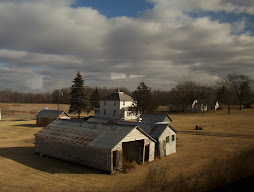


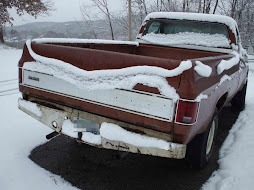

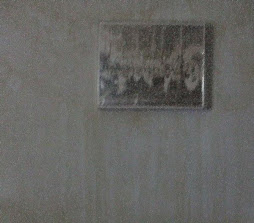





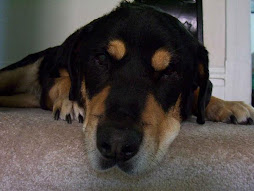
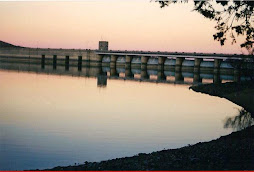






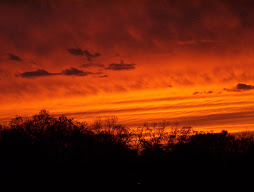
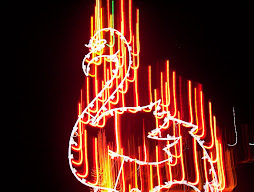




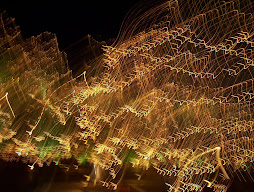


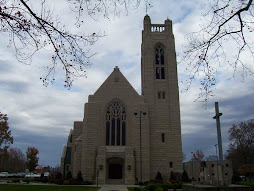
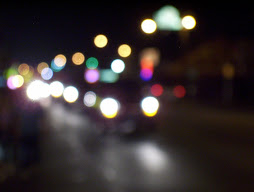









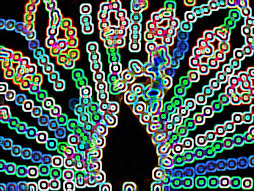






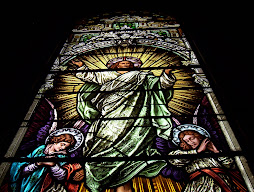


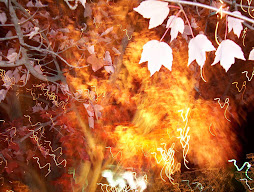

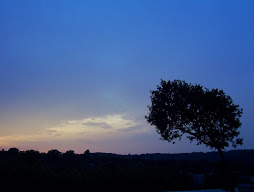







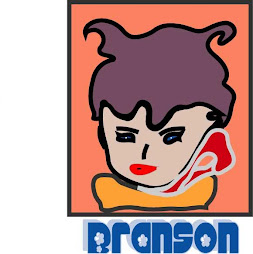



No comments:
Post a Comment